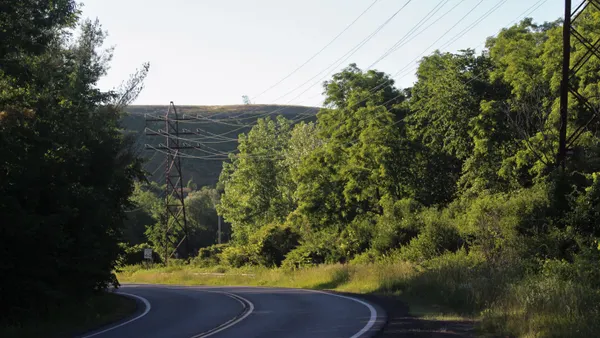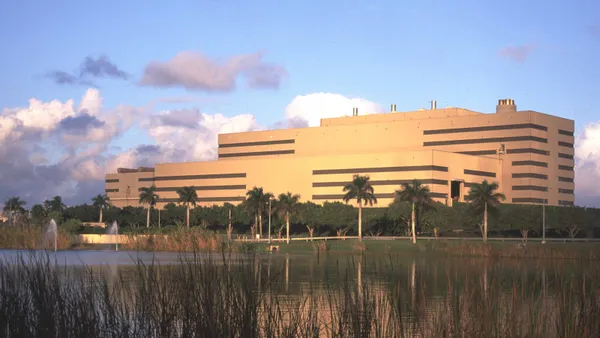Dive Brief:
- Norway's Klemetsrud incinerator in Oslo is attempting to capture carbon dioxide emissions from the household and industrial waste it burns as an alternative to capturing and burying greenhouse gases at coal-fueled plants that use fossil fuels. The first-ever attempt at this method entails feeding exhaust gases through pipes and filters and capturing 2,000 tons a year until the end of April.
- Pending successful results, a full-scale carbon capture plant could be built by 2020, with the carbon dioxide shipped to the North Sea and introduced into oil and gas fields to increase pressure and raise production, officials said, as reported in Climate Central.
- While the experiment is for an undisclosed amount, officials said for the technology to be viable, the cost of the European Union’s carbon emissions would have to substantially exceed current 6 euros ($6.50) per ton. The Klemetsrud site, which generates fuel to heat the city’s buildings, emits more than 300,000 tons of carbon dioxide a year—toxins blamed for accelerating the problems of climbing temperatures, droughts, floods, and rising sea levels.
Dive Insight:
Attempting to capture and store carbon is a challenging and costly endeavor, which is likely why this experiment is the first of its kind — despite waste-to-energy plants having a long-standing presence in the industry.
Valborg Lundegaard of Aker Solutions' engineering business, which is overseeing the pilot, said, "We see potential in this market across the world."
There are plenty of stakeholders who agree that the fight against climate change is a deserving investment, demonstrated this past December when almost 200 nations joined in Paris, and agreed to address this global environmental issue through technologies. The notion of better alternatives to existing trash-burning methods is gaining momentum just after a report released by Zero Waste Europe revealed serious emissions violations at several incineration facilities across that continent.
At Klemetsrud, 60% of trash burned comes from wood, food, and other biological sources, meaning that the experiment would be a step toward extracting carbon from a natural cycle in "negative emissions." And negative emissions will be essential to achieve goals established in Paris, said Frederic Hauge, head of environmental group Bellona.
"I hope Oslo can show other cities that it's possible" to capture emissions from trash, said Oslo Mayor Marianne Borgen at an opening ceremony at the Klemetsrud plant.









